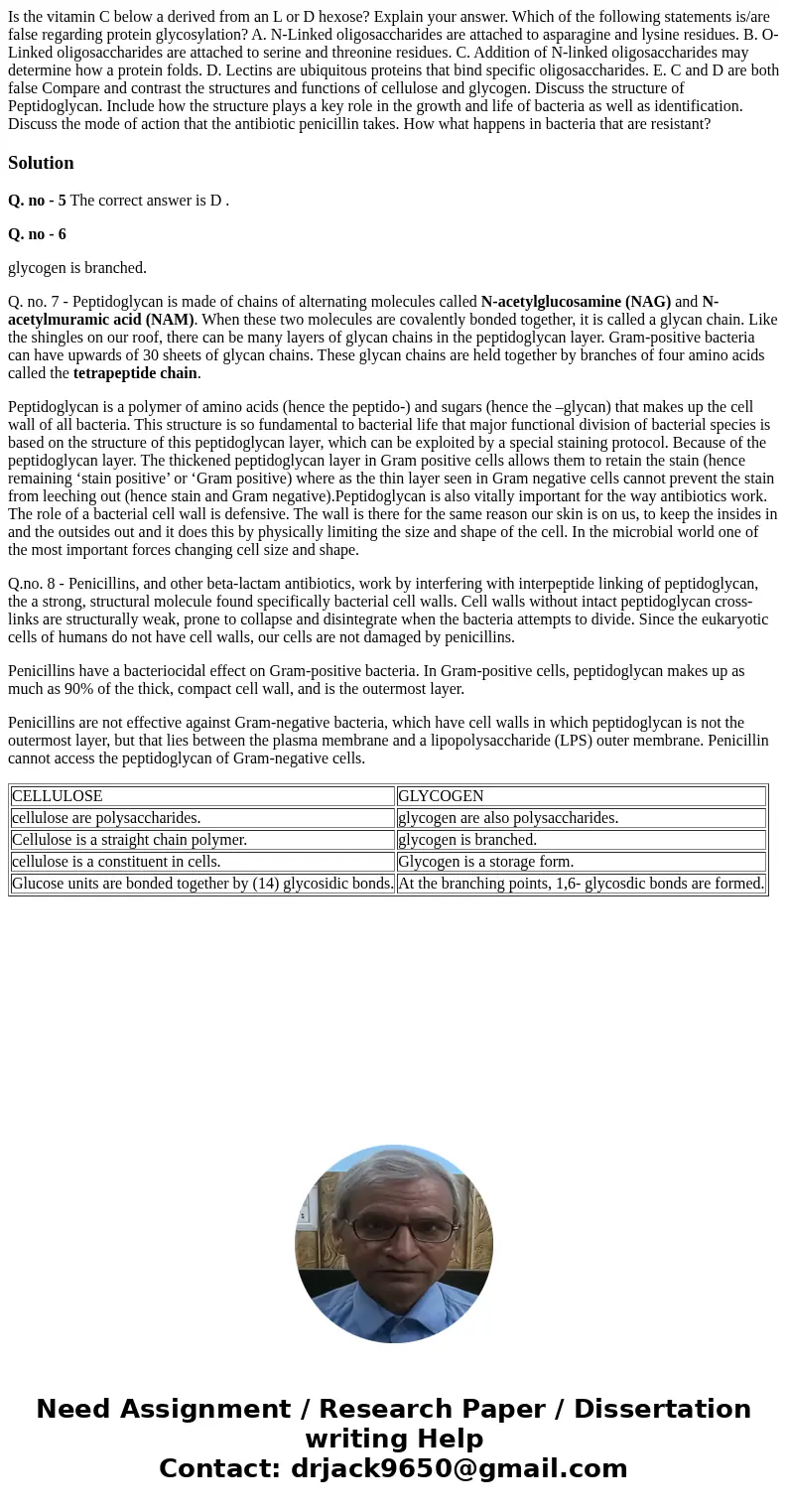Is the vitamin C below a derived from an L or D hexose Expla
Solution
Q. no - 5 The correct answer is D .
Q. no - 6
glycogen is branched.
Q. no. 7 - Peptidoglycan is made of chains of alternating molecules called N-acetylglucosamine (NAG) and N-acetylmuramic acid (NAM). When these two molecules are covalently bonded together, it is called a glycan chain. Like the shingles on our roof, there can be many layers of glycan chains in the peptidoglycan layer. Gram-positive bacteria can have upwards of 30 sheets of glycan chains. These glycan chains are held together by branches of four amino acids called the tetrapeptide chain.
Peptidoglycan is a polymer of amino acids (hence the peptido-) and sugars (hence the –glycan) that makes up the cell wall of all bacteria. This structure is so fundamental to bacterial life that major functional division of bacterial species is based on the structure of this peptidoglycan layer, which can be exploited by a special staining protocol. Because of the peptidoglycan layer. The thickened peptidoglycan layer in Gram positive cells allows them to retain the stain (hence remaining ‘stain positive’ or ‘Gram positive) where as the thin layer seen in Gram negative cells cannot prevent the stain from leeching out (hence stain and Gram negative).Peptidoglycan is also vitally important for the way antibiotics work. The role of a bacterial cell wall is defensive. The wall is there for the same reason our skin is on us, to keep the insides in and the outsides out and it does this by physically limiting the size and shape of the cell. In the microbial world one of the most important forces changing cell size and shape.
Q.no. 8 - Penicillins, and other beta-lactam antibiotics, work by interfering with interpeptide linking of peptidoglycan, the a strong, structural molecule found specifically bacterial cell walls. Cell walls without intact peptidoglycan cross-links are structurally weak, prone to collapse and disintegrate when the bacteria attempts to divide. Since the eukaryotic cells of humans do not have cell walls, our cells are not damaged by penicillins.
Penicillins have a bacteriocidal effect on Gram-positive bacteria. In Gram-positive cells, peptidoglycan makes up as much as 90% of the thick, compact cell wall, and is the outermost layer.
Penicillins are not effective against Gram-negative bacteria, which have cell walls in which peptidoglycan is not the outermost layer, but that lies between the plasma membrane and a lipopolysaccharide (LPS) outer membrane. Penicillin cannot access the peptidoglycan of Gram-negative cells.
| CELLULOSE | GLYCOGEN |
| cellulose are polysaccharides. | glycogen are also polysaccharides. |
| Cellulose is a straight chain polymer. | glycogen is branched. |
| cellulose is a constituent in cells. | Glycogen is a storage form. |
| Glucose units are bonded together by (14) glycosidic bonds. | At the branching points, 1,6- glycosdic bonds are formed. |

 Homework Sourse
Homework Sourse